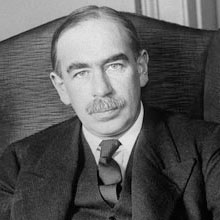By CountingPips.com
The latest Commitments of Traders (COT) report, released on Friday by the Commodity Futures Trading Commission (CFTC), showed that large futures speculators decreased their overall US dollar long positions last week for a second consecutive week while British pound sterling positions turned positive for the first time since August.
Non-commercial futures traders, including hedge funds and large speculators, decreased their total US dollar long positions to $19.58 billion on April 24th from a total long position of $22.6 billion on April 17th, according to the CFTC COT data and calculations by Reuters which calculates the dollar positions against the euro, British pound, Japanese yen, Australian dollar, Canadian dollar and the Swiss franc.
Individual Currencies:
EuroFX: Currency speculator sentiment improved for the euro currency last week as euro net short positions or bets against the currency decreased to 113,367 contracts on April 24th from the previous week’s total of 118,125 net short contracts. Euro positions had declined two consecutive weeks before last week’s turnaround.
The COT report is published every Friday by the Commodity Futures Trading Commission (CFTC) and shows futures positions as of the previous Tuesday. It can be a useful tool for traders to gauge investor sentiment and to look for potential changes in the direction of a currency or commodity. Each currency contract is a quote for that currency directly against the U.S. dollar, where as a net short amount of contracts means that more speculators are betting that currency to fall against the dollar and net long position expect that currency to rise versus the dollar. The graphs overlay the forex spot closing price of each Tuesday when COT trader positions are reported for each corresponding spot currency pair.
GBP: British pound sterling positions rose last week for a second consecutive week and landed in positive territory for the first time since last August. British pound positions saw a total of 7,536 net long contracts on April 24th following a total of 13,051 net short contracts registered on April 17th. Pound positions have surged higher and surpassed the August 29th level of 444 net long contracts to level at the highest standing since August 22 when long contracts equaled 10,961.
JPY: Japanese yen speculative contracts improved slightly last week for a second consecutive week as Yen positions totaled 55,903 net short contracts reported on April 24th following a total of 57,803 net short contracts on April 17th.
CHF: Swiss franc speculator positions declined last week for a second straight week after improving for the previous two weeks. Speculator positions for the Swiss currency futures registered a total of 16,641 net short contracts on April 24th following a total of 13,762 net short contracts as of April 17th.
CAD: Canadian dollar positions continued to advance higher and reached their highest level since May of 2011. Canadian dollar positions rose to a total of 44,224 net long contracts as of April 24th following a total of 38,028 long contracts that were reported for April 17th. CAD positions surpassed their highest level of the year which was a total of 42,315 contracts on March 19th and are at the highest level since May 3, 2011 when long contracts numbered 54,041.
AUD: The Australian dollar long positions declined slightly after advancing the previous week. Aussie positions fell to a total net amount of 46,041 long contracts on April 24th after rising to 48,421 net long contracts reported as of April 17th. AUD speculative positions on April 10th had reached their lowest level since long positions totaled 32,637 on December 27th 2011.
NZD: New Zealand dollar futures speculator positions declined following rises for three consecutive weeks. NZD contracts decreased to a total of 9,486 net long contracts as of April 24th following a total of 11,939 net long contracts on April 17th. NZD contracts on April 17th were at their highest level since March 13 before pulling back last week.
MXN: Mexican peso speculative contracts trended lower for the third consecutive week. Peso long positions declined to a total of 40,208 net long speculative positions as of April 24th following a total of 46,101 long contracts that were reported for April 17th.
COT Currency Data Summary as of April 24, 2012
Large Speculators Net Positions vs. the US Dollar
EUR -113367
GBP +7536
JPY -55903
CHF -16641
CAD +44224
AUD +46041
NZD +9486
MXN +40208














